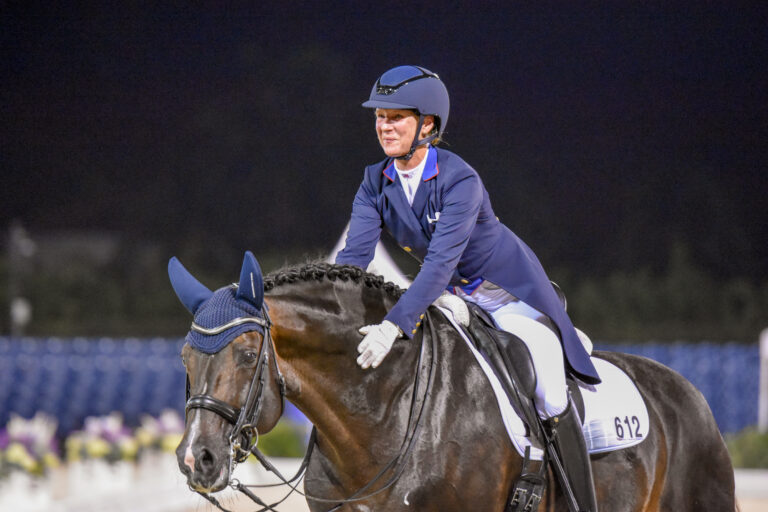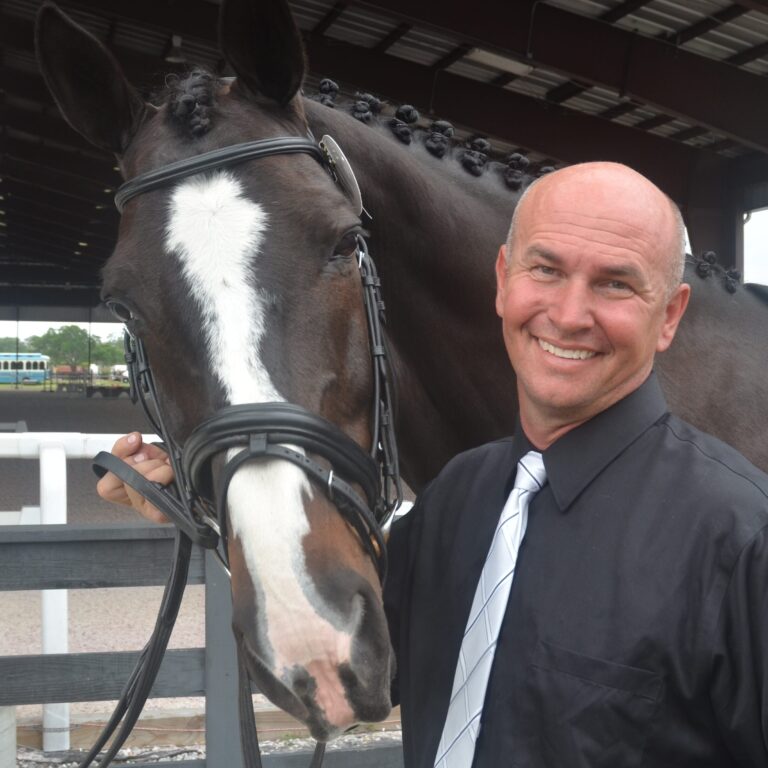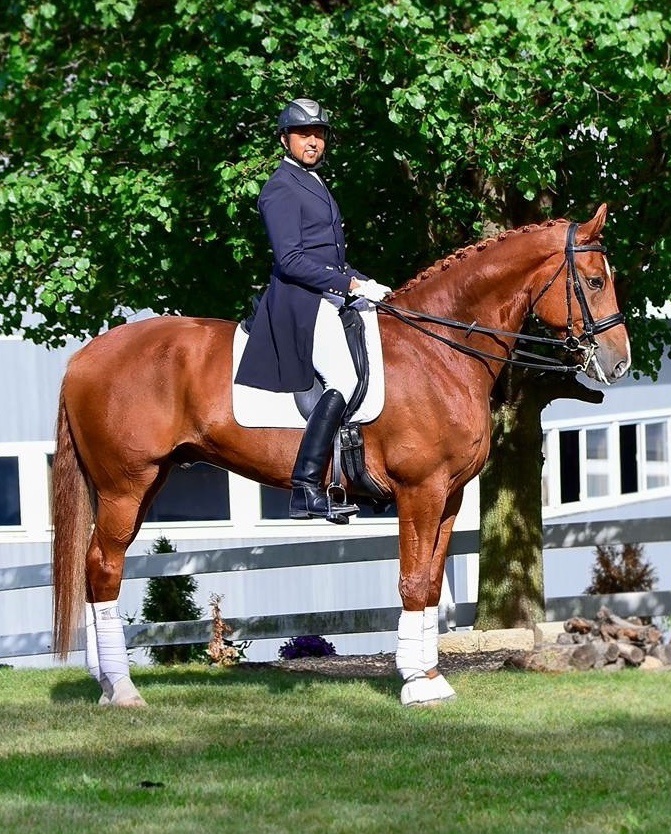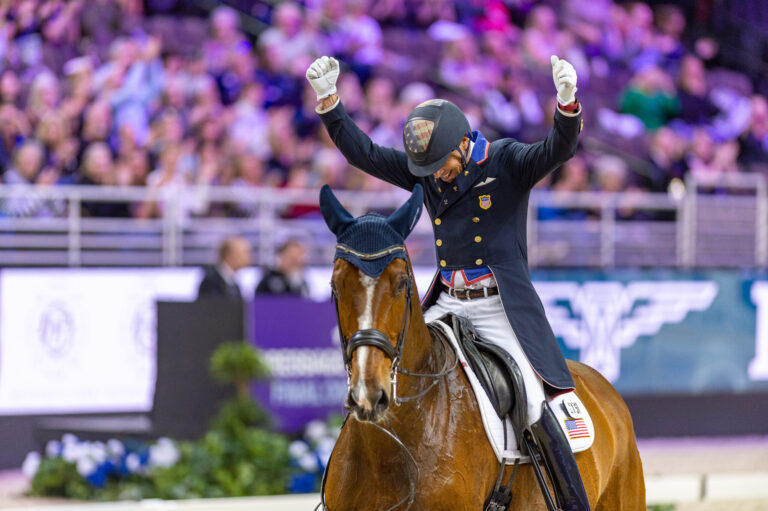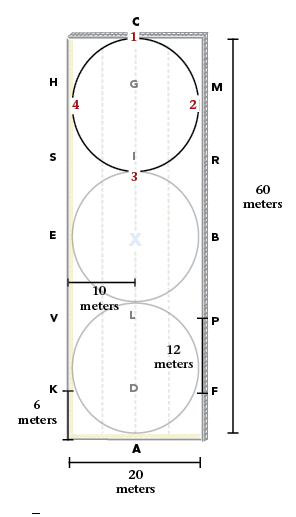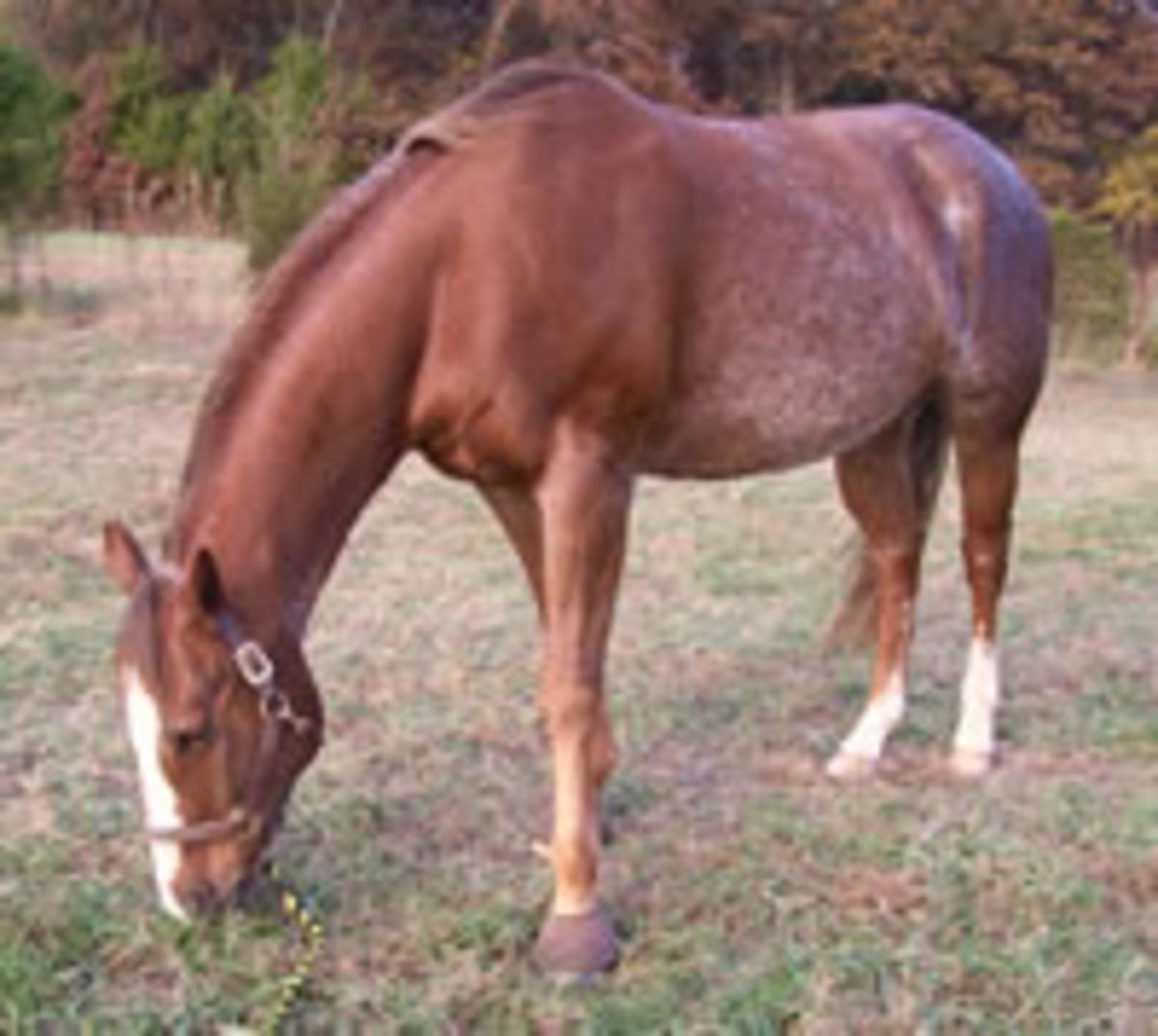
When I turned 50, I announced to my husband that I wanted to own either a horse or a Harley. The horse idea won. I began riding lessons, mucked stalls at a barn near our Chesterfield, Mo., home and got certified in equine massage. I was determined to understand all I could about the horse world.
I retired at 54 and purchased Max in 2005. We knew he had had colic surgery at 5, was sold to someone who “cowboyed” him and then was sold to a woman who rarely rode him. After a pre-purchase exam, Max was mine–a 100 percent red roan Quarter Horse born April 1992. Max seemed to be calm and sound. My vision was a smart horse like Roy Rogers’ Trigger. OK, I was naive, but I’m in my mid-50s and a novice. I was dedicated to being his last owner. Then, a number of events led to a crisis. Max had what I labeled “Max meltdowns.” If you are an experienced rider, these can be disconcerting. If you are a novice, they are nerve-racking.
The Max meltdown scenarios went like this: I did something that I swore was safe. Max responded with eyes wide, nostrils flaring and his whole body scrambling to run away. There were four meltdowns in the first month–three at bridling time and one as I linked on a longe line. The vet did a thorough exam and found nothing medically related.
I moved Max to a stable where he could have extensive turnout thinking that more time in the field would help. He began to relax. We had some spooking, but that was all. Then there was another meltdown. A stablehand with a broom over his shoulder innocently walked by Max, who reared back in total panic, broke his cross ties and ran out of the barn. I then made sure no one walked by with brooms on their shoulders. It takes a long time to rebuild trust that has been shattered by some thug.
I was convinced that we are successfully working through his issues. What else could happen? I was soon to find out. Max had secrets that no pre-purchase exam could reveal. I had just started a lesson. Max’s left stride was not right. Dr. Mark Cassells of Homestead Veterinary Hospital was at the barn and agreed to look at Max. An MRI was needed to give us better information about the extent of his navicular that was coupled with suspensory ligament inflammation in both legs. He was likely heading for retirement.
I felt horrible. But that was not the time to feel miserable. How could I not have known he was hurting to this degree? We learned Max is a dedicated horse who will do what you ask of him. It was time to focus on Max. Dr. Cassells laid out a recovery plan. Our goal was to eventually go on easy trail rides. Max was moved to Tommy and Cindy Locke’s remarkably serene Justa Venture Farm. For six months, it was a litany of turnout, shockwave therapy, medications, heat wraps, massages, micro-current therapy and hand walking. In March 2008, Dr. Cassells was confident that Max was improving. It was time to put the saddle on.
As I put the blanket on him, he turned his head toward me and gingerly raised his left front leg up and shook it lightly as if to say, “But look, I’m wounded.” I firmly said, “No, you can do this.” He gave a snort and resigned himself to the fact that we were going to take a ride. Later, Tommy confided that when I brought Max over he didn’t think I would ever be able to ride him. But despite his misgivings, he encouraged me every day. We continued to see a glimmer of hesitation, so farrier Scott Sides switched Max to EquiFlex shoes for his front hooves. Max graduated from Payless to Ferragamo, and his strides became more confident.
Max was pronounced sound for gentle riding. We are ready to start training. I was talking with Lisa, my equine mentor, and she recommended transitioning Max and me to dressage. We knew he would never be able to do hunter/jumper routines. But we also knew he could do more than just walk around the fields. Dressage was providing the alternative answers. I needed to learn “horse,” and Max needed to rediscover his potential. Both of us had a lot to unlearn, relearn and learn.
Within moments of sitting in a dressage saddle I was hooked. I could feel Max’s hips move differently. I liked it. Max liked it. We were on a roll. I purchased the dressage tack. By the way, Max looks stunning in black.
Our training is divided into three parts. First, my trainer, Lisa Von Gontard is teaching me to communicate with Max in his language. I tell everyone I am learning “horse.” I am discovering how much I can “say” with my eyes and body position. The first time he joined up with me was spectacular! Max was listening and trusting me. He was revealing the inner gentleman that was always there.
Part 2 is our dressage training under saddle. Lisa’s methodical approach allows both of us to progress together as a team. There is no time table. Everything is driven by how well Max responds to each new request we make of him. Dressage is so logical. It demands that I really think about what each muscle and stride is telling me. My background in equine massage work helps me know what muscles connect where. The coaching and work with my previous trainers, Ellen and Amy, began to have more value. Cindy’s encouragement for confidence was invaluable.
Part 3 involves hand-walking through an ever-changing obstacle course to build up his proprioceptive skills. Max’s movements clearly show what is working and not working. Just recently, I noticed a hesitation in his right hip. Lisa confirmed my observations. Dr. Cassells recommended chiropractic work. Dr. Terry Surtin began his chiropractic therapy. This is what Max needed–someone to listen. I’m a firm believer that our “rehabilitative dressage strategy” has put us in a place where we can hear each other’s communication with more clarity and compassion.
In October, we began trot transitions. You can see Max’s confirmation change as his muscles responds to the precision of dressage. All my friends comment on how much calmer Max is. I’m more at peace as well. Max and I are evolving into riding partners. Lisa is guiding us to unlock our potential. An army of supporters is cheering us on as well: Dr. Cassells, Dr. Surtin, Scott, Tommy, Cindy, friends Tara Ruck, Sigrid Sheehan, Sandy Baker and Nicola Schulten, and my husband, Michael. We are discovering our abilities as well as unlocking the beauty that lies within Max’s soul. Dressage has helped me understand the quote “.a quiet spirit is of priceless value when performing outward activities.”


